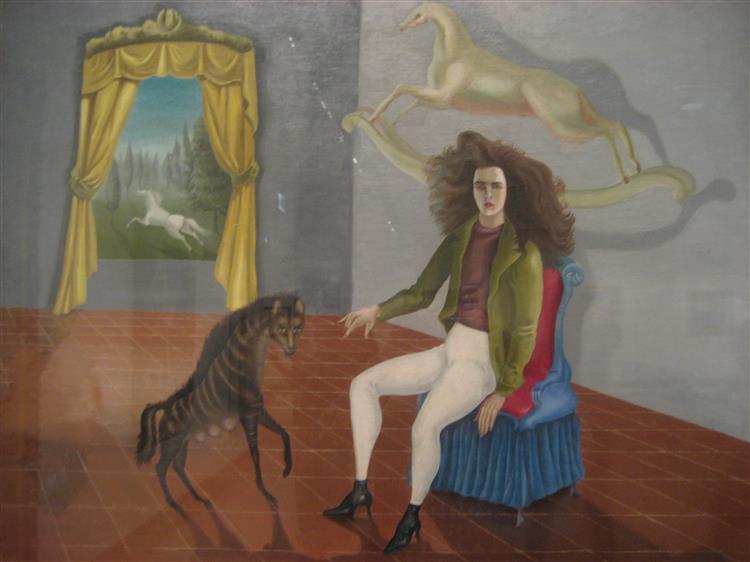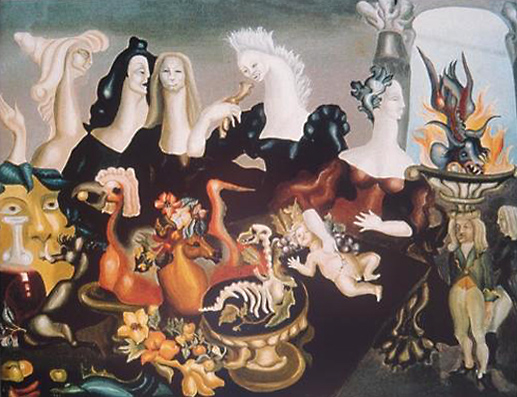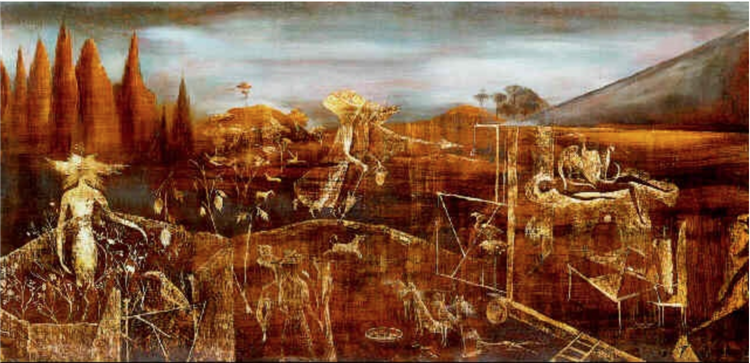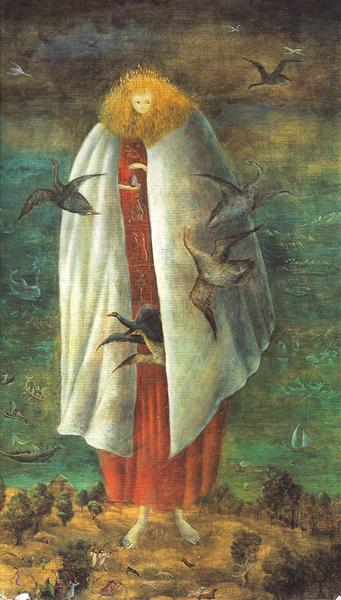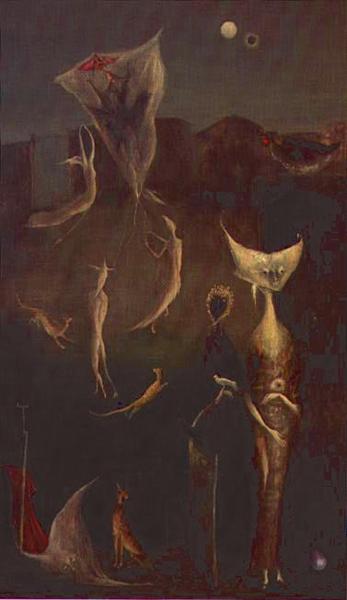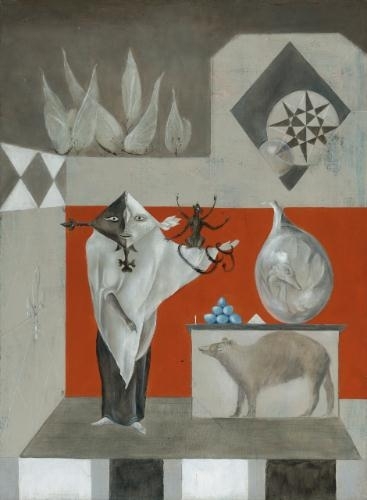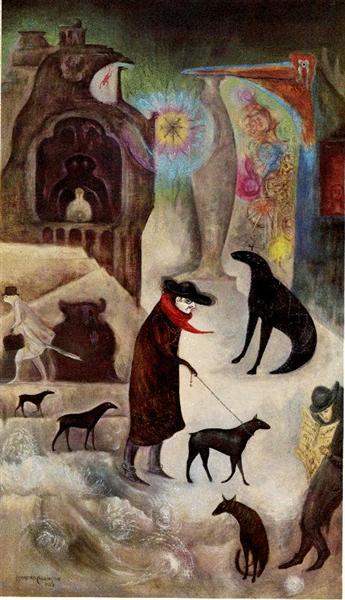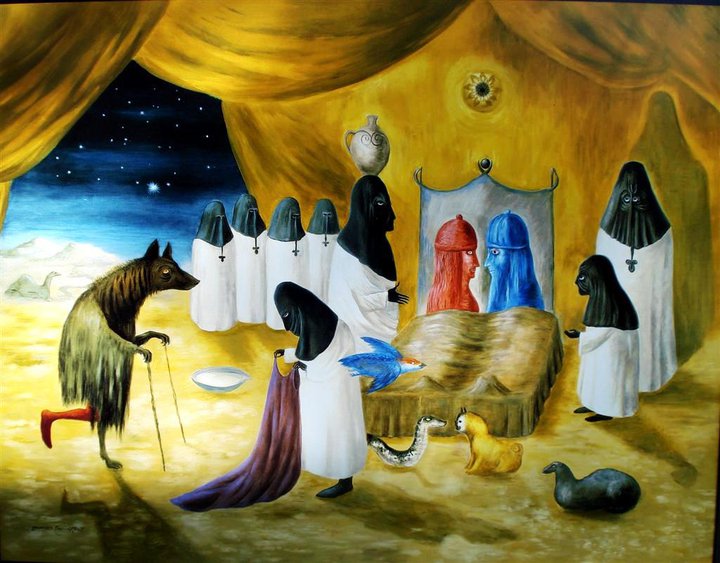BIOGRAPHY
Mary Leonora Carrington (6 April 1917 – 25 May 2011) was a British-born, naturalised Mexican surrealist painter and novelist. She lived most of her adult life in Mexico City and was one of the last surviving participants in the surrealist movement of the 1930s.
EARLY LIFE
In 1917, Carrington was born into an upper-class, Irish-Catholic family in Lancshire, England; she struggled to conform to societal standards, notably her father’s desire for her to be a debutante[1]. Frequently attending Roman Catholic schools, she found refuge in art and literature, like the works of Lewis Carroll, Jonathan Swift, and Beatrix Potter. At the age of 19 (in 1936), she attended the first International Surrealist Exhibition in London, where she was first exposed to the work of Max Ernst; the pair met and began a proper relationship the next year, around the time Ernst divorced his first wife. While critics and Breton alike treated women Surrealists rather flippantly [with critics dismissing them outright and Breton regarded women as muses for male artists], Ernst encouraged Carrington to carve out her own space in the Surrealist sphere. She spent years learning to paint, drawing inspiration from the the storybooks she used to read - Carrington imbued her work with a youthful creativity and ingenuity that never left her as the years went on.[2]
CAREER
As WW2 broke out, Ernst was imprisoned in an internment camp while Carrington fled to Spain; there, she was held in a psychiatric hospital, suffering from extreme emotional distress. While she and Ernst never resumed their relationship, she continued to work, recounting her experience in Mexico through pieces like Green Tea, painted in 1942 after leaving the hospital and moving to New York City.[1] Nearing the end of the year, she moved down to Mexico City, where she stayed for the rest of her life; she ended up brushing elbows with a number of expatriated surrealist artists like Remidios Varo, Benjamin Péret, Kati and José Horna; it was here that she met her next and last husband, Emerico “Chiki” Weisz.[2]
LATER LIFE
Carrington continued to paint late into her life, incorporating many of the common scenes she witnessed into the mysterious and fantastical worlds she painted. She eventually died in 2011, at the age of 94, as one of the last living links to the original Surrealist movement.
SELECTED WORKS (1937 - 1987)
BIBLIOGRAPHY
- 1. n/a. "Leonora Carrington | Artist Profile." National Museum of Women in the Arts. https://nmwa.org/art/artists/leonora-carrington/
- 2. Turner, Madeline Murphy. "Leonora Carrington |MoMA." Museum of Modern Art. https://from-here.com
- 3. n/a. "Leonora Carrington." Wikipedia.com. https://en.wikipedia.org/wiki/Leonora_Carrington
